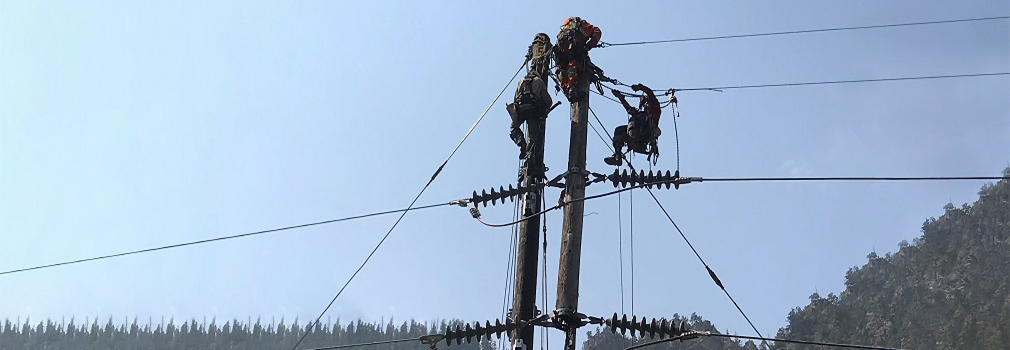Environmental Leadership
September 21, 2023
It's National Preparedness Month: Be wildfire ready

How well you prepare for a disaster before it happens impacts how quickly you respond and recover. Xcel Energy is committed to providing the energy that powers your life, and our industry has a strong track record of maintaining high levels of reliability. However, incidents such as tornados, wildfires or floods can impact the energy grid and cause widespread power outages. That’s why we are constantly monitoring our system, working to keep the public and our employees safe and drilling to prepare for severe weather events.
During National Preparedness Month, Xcel Energy is sharing crucial information that will help you prepare for unforeseen disasters and emergencies. As climate conditions have changed throughout the west, the overall risk, frequency and severity of wildfires has increased. And as wildfire season grows longer, experts stress the importance of mapping out evacuation routes and gathering emergency supplies.
Take steps to be prepared
When a fire occurs, you may only have moments before you need to evacuate. Preparing in advance by creating an Evacuation Plan and Kit, leaving you time to prepare your property for a wildfire, can help make sure you’re ready to go and help keep you and your family safe.
Creating an evacuation plan
According to safety experts, a complete evacuation plan includes, at minimum, the following:
- Safe meeting location. Pick one or two safe meeting locations outside the wildfire hazard area in advance of a wildfire, and plan to meet there should you get separated.
- Multiple escape routes. Wildfires can result in rapidly changing conditions, which may require you to evacuate using a route other than the one you are used to. Plan and practice multiple escape routes in advance.
- External point of contact. Pick a friend or relative outside the wildfire hazard area who can serve as a single point of contact for you and your family should you get separated.
- Plan for pets and/or livestock. Plan to bring your pets and/or livestock with you. If it’s not safe for you to stay, it’s not safe for them to stay. If you must leave animals behind, leave them in an open space with the greatest possible distance between them and the fire.
As part of your evacuation plan, you should create an emergency supply kit with sufficient supplies for your entire family. When assembling an emergency supply kit, remember the “Six Ps”:
- People and pets. Pack supplies for yourself and your pets, including non-perishable foods, a gallon of water per person, per day, a change of clothing and hygiene and sanitation supplies for a minimum of three days.
- Papers, phone numbers and important documents. Prepare a folder with your critical documents, including social security cards, passports, birth certificates and deeds, among others. If possible, keep these in a fireproof container that can easily be taken with you.
- Prescriptions, vitamins, eyeglasses and medical devices. Include enough supply to meet your family’s needs for at least three days. Keep a first aid kit of sufficient size for your family, as well.
- Pictures and memorabilia. Bring items that would be irreplaceable if lost in a fire.
- Personal computers, phones, hard drives, disks and chargers. Pack these items as they may be expensive to replace and may contain data that’s irreplaceable if lost.
- Plastic (bank cards) and cash. Bring both – you don’t know if vendors will be able to accept credit or debit cards if a wildfire affects infrastructure.
In addition to creating an evacuation plan and assembling an emergency supply kit, you should also plan to:
- Get fire extinguishers for your home. Check them regularly to ensure they’re not expired, and make sure everyone in your family knows how to use them.
- Locate and learn how to operate your home’s gas, electric and water main shut-off controls.
- Create and maintain a list of emergency contact numbers in your cell phone, both in your home and in your emergency supply kit.
- Keep a portable radio on hand so you can stay up to date on wildfire conditions and receive necessary evacuation information.
- Talk to your friends and neighbors and make sure they have an evacuation plan, too.
When it’s time to evacuate, refer to the Federal Emergency Management Agency’s evacuation checklist for additional guidance.
We recognize that wildfires pose a significant year-round threat to our customers, communities and our service territory as a whole – since 2019, we’ve invested over $450 million in wildfire mitigation activities to help protect lives, property and Colorado’s forests from the threat of wildfire under our Wildfire Mitigation Program. Learn more about the program on our website.


